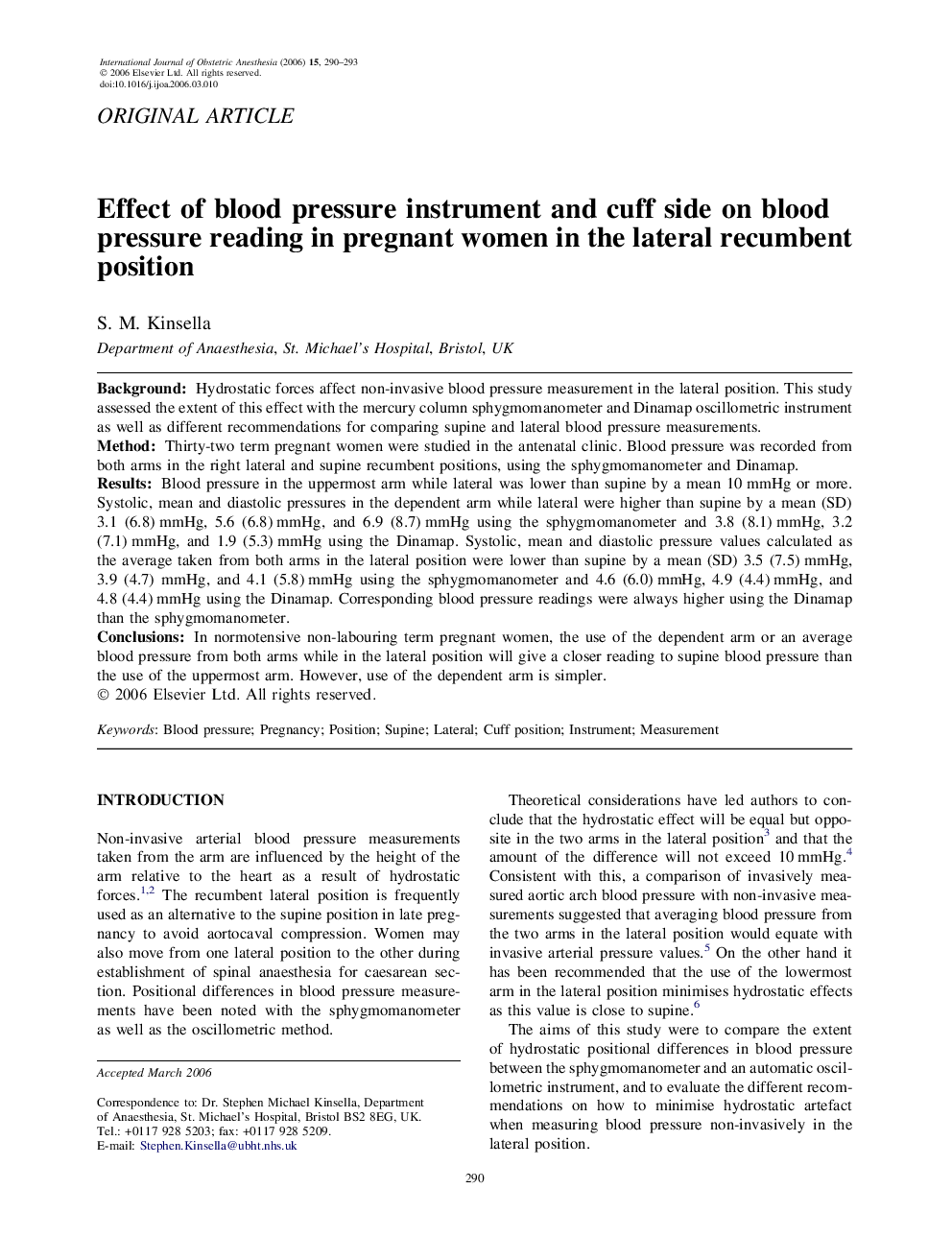| کد مقاله | کد نشریه | سال انتشار | مقاله انگلیسی | نسخه تمام متن |
|---|---|---|---|---|
| 2758394 | 1567557 | 2006 | 4 صفحه PDF | دانلود رایگان |

BackgroundHydrostatic forces affect non-invasive blood pressure measurement in the lateral position. This study assessed the extent of this effect with the mercury column sphygmomanometer and Dinamap oscillometric instrument as well as different recommendations for comparing supine and lateral blood pressure measurements.MethodThirty-two term pregnant women were studied in the antenatal clinic. Blood pressure was recorded from both arms in the right lateral and supine recumbent positions, using the sphygmomanometer and Dinamap.ResultsBlood pressure in the uppermost arm while lateral was lower than supine by a mean 10 mmHg or more. Systolic, mean and diastolic pressures in the dependent arm while lateral were higher than supine by a mean (SD) 3.1 (6.8) mmHg, 5.6 (6.8) mmHg, and 6.9 (8.7) mmHg using the sphygmomanometer and 3.8 (8.1) mmHg, 3.2 (7.1) mmHg, and 1.9 (5.3) mmHg using the Dinamap. Systolic, mean and diastolic pressure values calculated as the average taken from both arms in the lateral position were lower than supine by a mean (SD) 3.5 (7.5) mmHg, 3.9 (4.7) mmHg, and 4.1 (5.8) mmHg using the sphygmomanometer and 4.6 (6.0) mmHg, 4.9 (4.4) mmHg, and 4.8 (4.4) mmHg using the Dinamap. Corresponding blood pressure readings were always higher using the Dinamap than the sphygmomanometer.ConclusionsIn normotensive non-labouring term pregnant women, the use of the dependent arm or an average blood pressure from both arms while in the lateral position will give a closer reading to supine blood pressure than the use of the uppermost arm. However, use of the dependent arm is simpler.
Journal: International Journal of Obstetric Anesthesia - Volume 15, Issue 4, October 2006, Pages 290–293